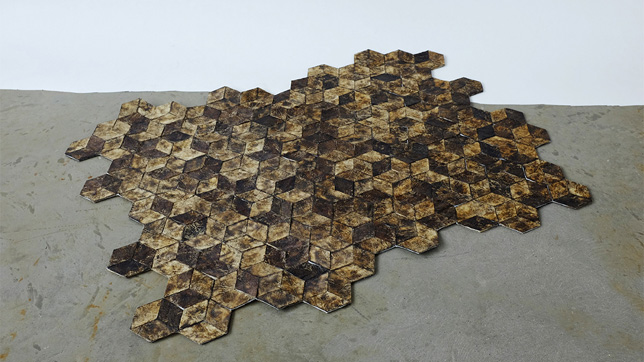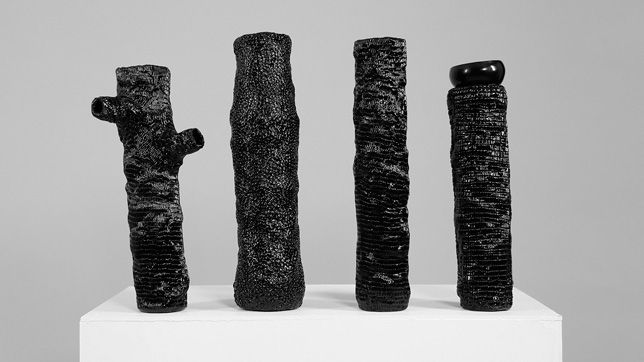Marlène Huissoud uses insect by-products to develop new materials
Dezeen and MINI Frontiers: French designer Marlène Huissoud explains how she produced a range of "glass" and "leather" objects using resin collected from beehives and silkworm cocoons in this movie from Eindhoven.

Huissoud's project From Insects aims to showcase the "unique" and "precious" materials that can be created from insect by-products.
"I'm showing two different materials that come from two different insects," Huissoud says in the movie, which was filmed at Dutch Design Week last year. "It's a celebration of the properties of these materials."

Huissoud, who comes from a family of beekeepers, has produced a series of vases out of a kind of biodegradable resin called propolis. The resin is produced by bees from plant matter and used to fill small gaps in a beehive.
"The bees collect it and use it as a sealant," Huissoud explains. "Once a year the beekeeper has to remove this material in order to extract the honey."

Huissoud discovered that by purifying and heating the material, she could blow it like glass.
"[Propolis has] different properties depending on the trees [the bees produce it from]," she explains. "The one that I've been exploring is from rubber trees. It has a really unique glass-like aspect."

With a much lower melting point, the material is easier to manipulate than glass, Huissoud says, but produces similar – if slightly smellier – results when set.
"The smell comes from the beehive and is very strong," she says. "It will last a long time, so if you want a piece [in your home], you're going to have a smell with it as well."

The second material Huissoud has developed is made from the cocoons of a species of Indian silkworm, which is bred primarily for the food industry rather than silk production.

The cocoons contain a natural glue called sericin that binds the fibres of silk together when heat and water is applied.
"[The cocoon] is like an onion; it has different layers of fibres and it contains an amazing natural glue," Huissoud explains. "You can make a really strong paper out of it."

Huissoud discovered that by combining this paper-like material with propolis, she could make a material with many of the properties of leather.
Dezeen Book of Interviews: our new book, featuring conversations with 45 leading figures in architecture and design, is on sale now
"I used the bee bioresin as a varnish on top of it," she says. "This new material is very similar to leather and it can be used in fashion or furniture."

Both materials are made from the natural by-products of insects, but Huissoud doesn't believe the processes could be scaled up to produce more sustainable materials in future. Propolis is actually very rare, with a single hive producing no more than 100 grams a year, she says.
"It is really a craft project," she explains. "I don't see it having industrial potential because bee bioresin is so precious."

This movie was filmed in Eindhoven at Dutch Design Week 2014. The music in the movie is a track called Family Music by local hip hop producer Y'Skid.
Dezeen and MINI Frontiers is an ongoing collaboration with MINI exploring how design and technology are coming together to shape the future.

